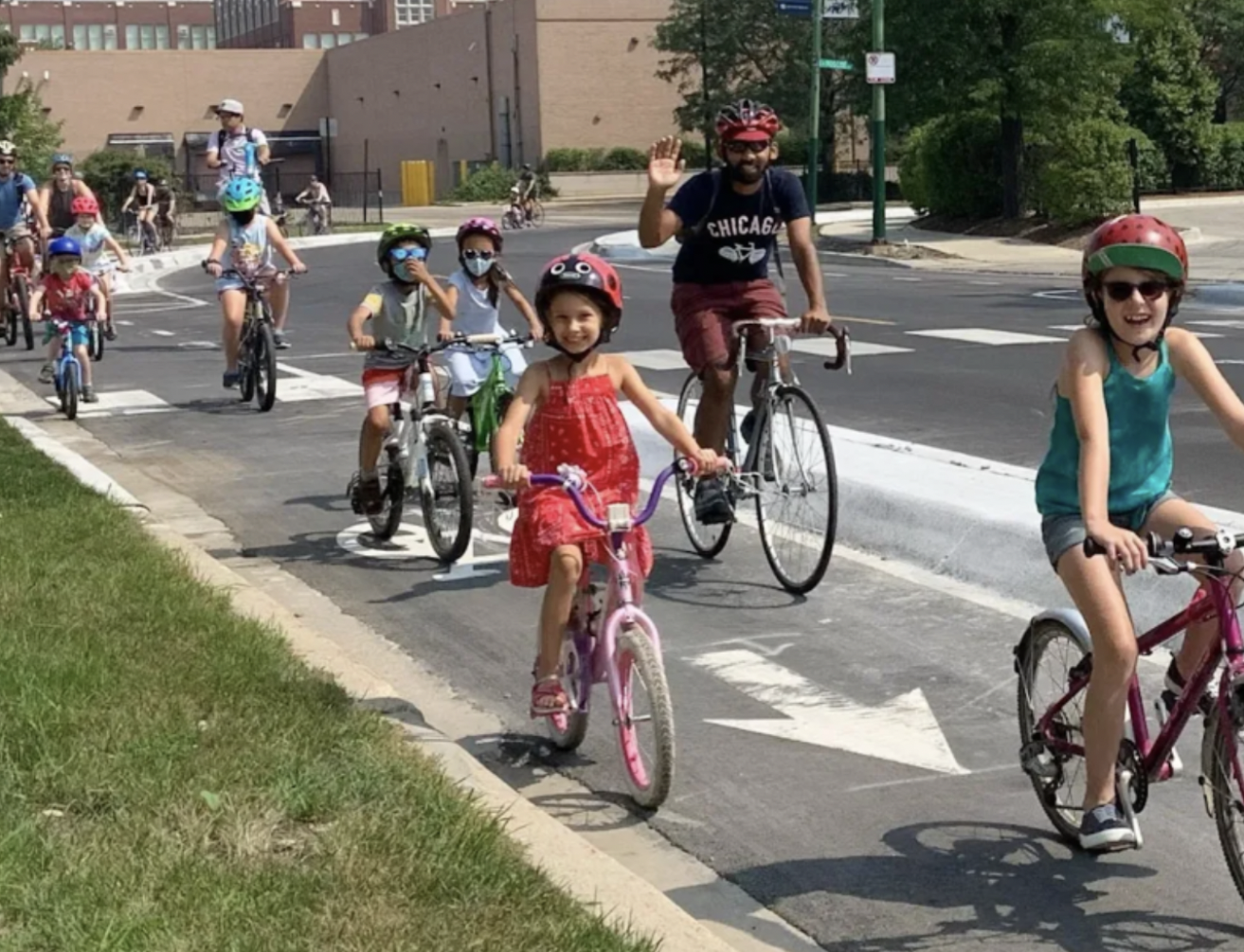Last week the Chicago Department of Transportation released the Chicago Cycling Strategy plan, "outlining a community-driven approach to expanding Chicago’s bike network." Streetsblog will take a deep dive into that document in the near future.
In response to the announcement, on Friday the Chicago Sun-Times asked its readers, "Do you think the city needs more bike lanes? Tell us why or why not." The paper published responses yesterday.
There were plenty of smart replies from readers. “We already have plenty of asphalt, we need a lot fewer cars!” wrote Dave Coulter.
“Yes, to make traffic safer and move faster for both cars and bikes," said Robert Kastigar. "It establishes clear markers of where to drive. It’s like ‘No Passing’ markers on highways for cars. Every major road in Chicago should have a bike lane. Protected bike lanes are best but if not at least clearly marked, and signed, bike lanes.”
“Chicago needs more protected bike lanes," wrote Laura W. "The existence of a painted line alone doesn’t decrease drivers’ speed or [increase] caution, and many drivers are confused about the laws concerning bikes. Better design, like concrete barriers and green boxes to demarcate space for bikes, will make biking safer. Making biking safer will increase biking. Increased biking makes for a better Chicago—cleaner air, less noise pollution and in general happier people.”
“Yes, more protected bike lanes mean less [car] traffic," replied Ben B. "It’s also a better use of space, especially on the South Side where we have so many too-wide multi-lane roads going through residential areas. That encourages crazy driving like it’s a highway. The paint-only bike lanes are almost worthless, so don’t bother with those.”
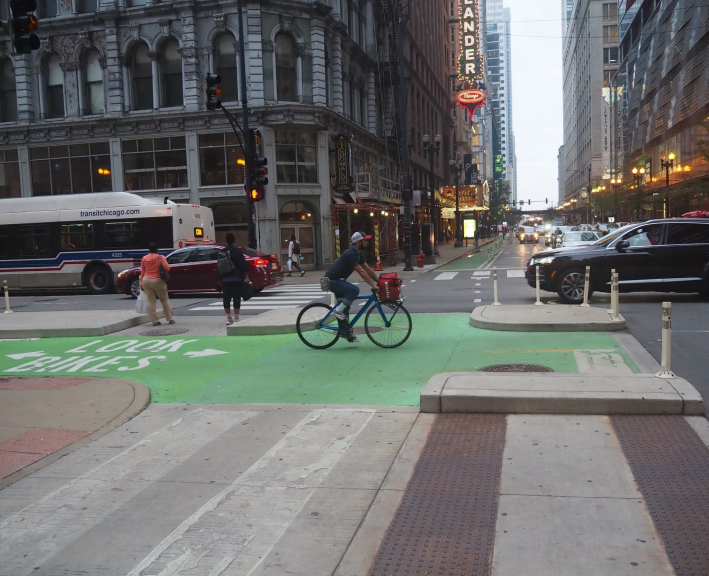
Even some of the anti-bike lane folks made interesting arguments. “Nope. More pedestrian malls and wider sidewalks," said Christine Stuminski. "Loads of bike lanes already — every street can’t be a bike lane."
Of course, Chicago currently lacks a citywide network of connected, protected bike lanes. And bikeway projects almost always improve conditions for walking as well. For example, adding protected bike lanes to a street calms motor vehicle traffic and shortens pedestrian crossing distances. When mixed-traffic and/or car parking lanes are converted to protected lanes as part of a road diet project, the street remix can often involve widening sidewalks as well.
And Neighborhood Greenway projects (called bike boulevards in other cities), which involve traffic calming strategies on side streets to create bike-priority routes, always create safer, more pleasant conditions for walking as well. That's especially true if "traffic diverters," concrete infrastructure that prevents drivers from using residential streets as cut-through routes, are installed, although that hasn't been done in Chicago yet. And, of course, car-free streets can accommodate both walking and biking.
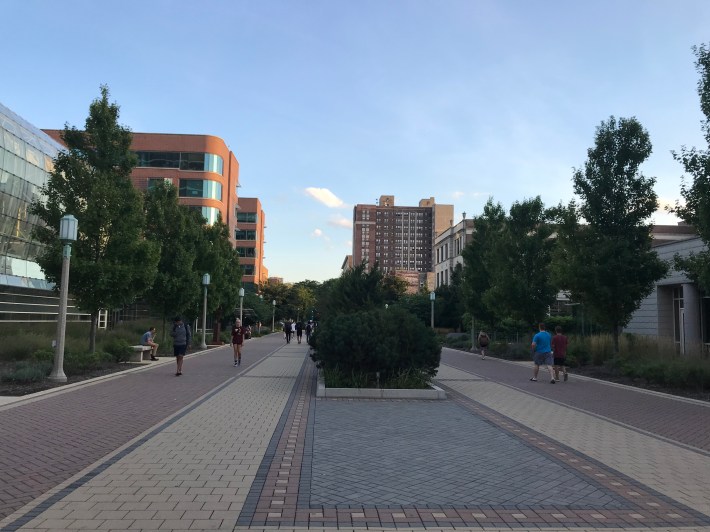
And then there was a pro-transit argument against bike lanes. "The bike lanes we’ve already got are seriously obstructing not only car traffic, but CTA buses," wrote Roger Deschner. "Some bike lanes need to be eliminated, such as 55th Street in Hyde Park. We need to encourage people to use transit, which can carry folks who are old or otherwise can’t ride a bicycle. The bike lanes make the #55 bus run slower, which is a problem. The bicycle utopia is just not going to happen.”
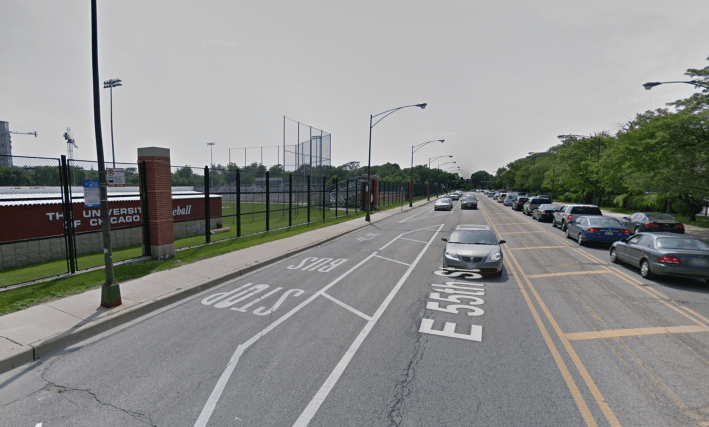
I've never heard of the curbside parking-protected bike lanes on 55th Street creating any issues for buses. Hyde Parkers, what's been your experience with that?
But at any rate, it's fairly easy to design curbside protected bike lanes that actually help buses travel more efficiently, by incorporating "island" bus stops to the left of the bike lane. That lets the bus driver pick up passengers without having to leave the travel lane, and it reduces conflicts between buses and bikes. CDOT has been using this strategy more frequently lately, such as on Milwaukee Avenue in River West and Logan Square.
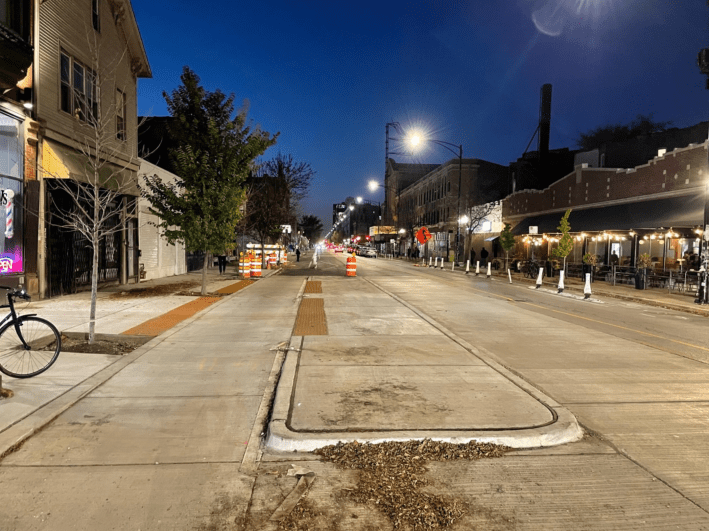
And, of course, there were the usual litany of complaints that some bicyclists don't follow the rules of the road (neither do many drivers of high-speed, multi-ton vehicles, which is exponentially more dangerous), and complaints that bike lanes cause traffic jams (obviously driving causes traffic congestion, and choosing to ride a bike instead helps alleviates it.)
The Sun-Times also recently published an unintentionally hilarious polemic against bike lanes by one C.R. Green of Uptown in its letters to the editor section. "Am I the only one who has noticed that building bike lanes to make cycling in city traffic safe is a lot like putting filter tips on cigarettes to make smoking tobacco safe? A cosmetic change isn’t going to change the fact that for traffic, the bicycle is a fatally flawed product from the start... Bicycles simply don’t belong in city traffic."
The final line of the letter was the cherry on the sundae. "Instead of spending the taxpayers’ money to force more bike lanes down the public’s throats, perhaps the politicians could learn to ask us first if this is what we want, rather than just giving an overly powerful lobby everything they want."
Nowadays CDOT collects plenty of public input on new protected bike lanes – perhaps too much. Do transportation departments hold a community meeting every time they want to install guardrails to protect drivers? And the notion that there's an insidious, All-Powerful Bicycle Lobby is such a widespread NIMBY trope that there was a popular Twitter account by that name.
Lest you think the letter, run on April 1, was an April Fool's joke, C.R. Green is a real person, and this is actually how they think. In a Chicago Tribune article about a North DuSable Lake Shore Drive reconstruction community meeting, Green told the paper that too much focus was being places on improving parkland, biking, and transit, and there was a risk that the rebuilt eight-lane highway might not be car-centric enough. "I've been feeling drivers are not considered part of the mix... Our needs are not met at all."
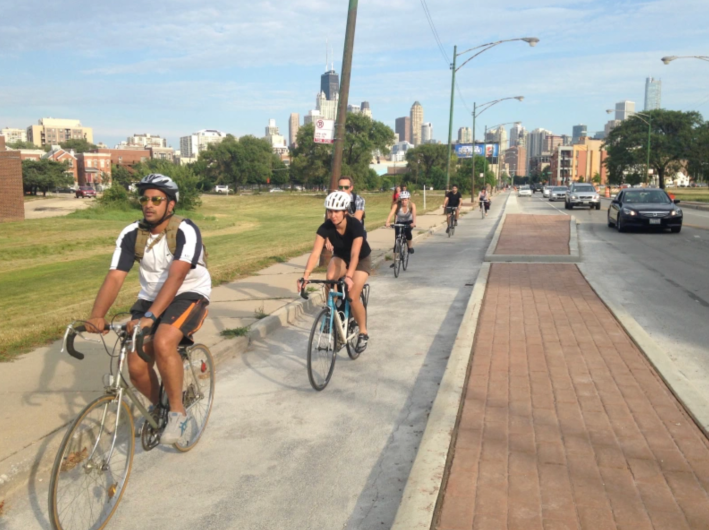
But Green's recent letter is also a case of someone being so wrong, they're right. It's true that bicycles shouldn't be sharing the road with fast traffic. That's why we should lower Chicago's default speed limit from 30 to 20 mph, and build protected or raised bike lanes or side paths on any streets where bike riders would otherwise be required to cycle alongside fast cars. Meanwhile, the speed limit on residential streets should be lowered to 10 mph or so.
Even in the most ridiculous flat-Earth rants, there's often a kernel of truth.
Read the Sun-Times responses and letter to the editor.
